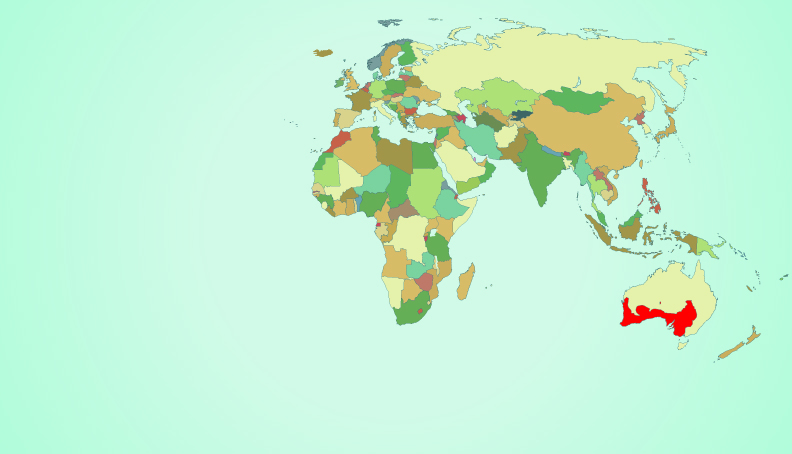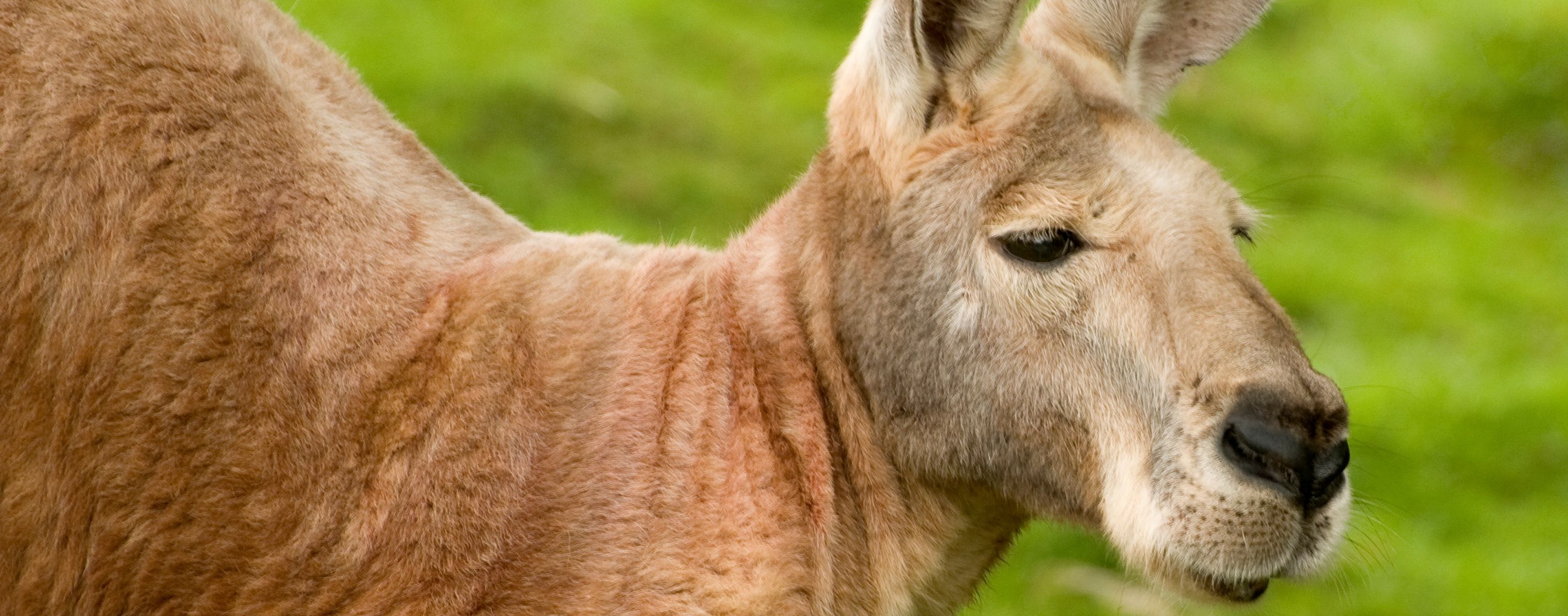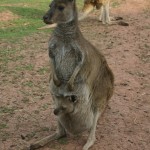Western Grey Kangaroo
Macropus fuliginosus
Habitat: These ‘roos prefer open grasslands near water with nearby forest or woodland.
Threats: This kangaroo is affected by the spread of extensive agriculture, particularly where land has been cleared for cereal crops. The western grey kangaroo is so numerous in some areas that it is considered a pest species, viewed as a competitor for pasture and water with domestic sheep and cattle.
Information: These large, fairly muscular animals are greyish-brown in colour. The males can grow to more than two metres from head to tail. The females are smaller. Their muzzles have finer hairs than most kangaroo species. The second largest marsupial, with the highest speed record for a marsupial, 64 km/h, is held by a female grey kangaroo.
Food: Western Greys are mainly grass eaters.
Breeding: The males may fight for the attention of a fertile female. They breed throughout the year, although most young are born in the summer. They usually produce one joey. New-borns resemble a jellybean and take only a few minutes to climb to the pouch and attach themselves to a teat. They leave the pouch at around nine months but continue to suckle for a further nine months, often while another young is occupying the pouch. The mothers and their young use a series of clucking sounds to communicate. Lifespan 12 to 15 years.
 The western grey kangaroo, somewhat contrary to its common name, is found throughout the south of Australia, from the Indian Ocean in Western Australia to western Victoria, New South Wales and southern Queensland. The range is strongly associated with the southern winter rainfall belt.
The western grey kangaroo, somewhat contrary to its common name, is found throughout the south of Australia, from the Indian Ocean in Western Australia to western Victoria, New South Wales and southern Queensland. The range is strongly associated with the southern winter rainfall belt.
Map: Red = Locations Found 808






